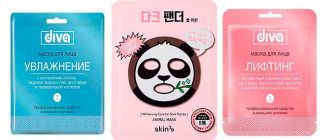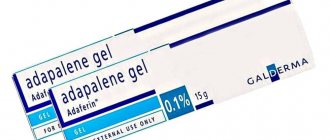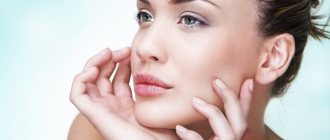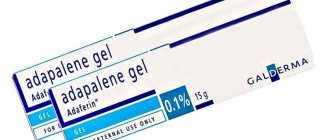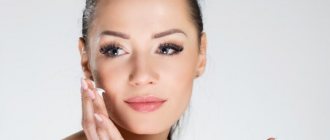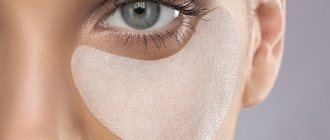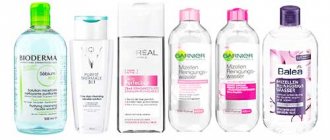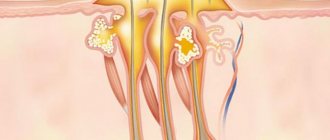All over the world, with the beginning of the spread of the new coronavirus infection COVID-19, a medical mask turned out to be one of the most popular products on pharmacy shelves. In many cities, it has become completely impossible to purchase this personal protective equipment.
Unable to buy disposable products, residents of different countries, including Russians, began to wear reusable fabric masks, sew them themselves from gauze folded in several layers, etc. However, on the Internet one can find many conflicting opinions questioning the safety of using this method of protection against coronavirus. Rospotrebnadzor spoke about how to properly use fabric masks and how to disinfect them.
How to properly dispose of a medical mask? More details
Types of fabric masks
A fabric mask is a napkin with slits for the eyes, nose and mouth, soaked in a serum of a certain effect.
A sheet mask is a piece of cloth with slits for the eyes, nose and mouth, soaked in beneficial serum.
What is a napkin made of?
A napkin can be made from different materials:
- cotton, bamboo (thin, affordable, but not very close to the face);
- hydrogel (more expensive in price, but better to use);
- biocellulose (expensive, but natural and convenient product).
One of the advantages of biocellulose is its ability to absorb and retain many active substances.
Hydrogel as a basis for a mask is a safe and convenient material; it is even used in medicine
What does a sheet mask do?
Like any cosmetic product, fabric masks are divided according to the principle of effect:
- moisturizing: eliminates dryness and flaking of the skin, saturates with vitamins;
- anti-inflammatory: relieve redness, inflammation, rash;
- drying: eliminate oily shine, normalize sebum production, narrow pores;
- whitening: lighten age spots, freckles;
- nutritious: nourish with nutrients, minerals, trace elements, improve complexion;
- anti-aging: eliminate early signs of aging, promote skin elasticity, smooth out wrinkles, etc.
Typically, each mask has its own specific direction of influence.
Korean cosmetics, which has captured the attention of many cosmetologists, somewhat distinguishes its fabric masks from products from manufacturers in other countries. Asians have made their masks super useful and multifunctional. Each mask, in addition to its main function, actively moisturizes, nourishes, saturates with vitamins and cleanses the skin.
Active substances in the composition
Sometimes fabric masks are classified according to the main active ingredient in the composition. The most common are the following:
- with hyaluronic acid: such masks have pronounced moisturizing and tightening properties, recommended for dry, dehydrated and aging skin;
- with collagen: this component promotes the synthesis of its own collagen, which leads to increased elasticity of the skin and smooth out shallow wrinkles;
- with pomegranate extract: is a strong antioxidant, fights early aging of skin cells, protects against harmful environmental influences;
- with fruit acids: eliminate dead skin cells, refresh, remove signs of fatigue;
- with charcoal: normalizes the functioning of the sebaceous glands, removes excess sebum, deeply cleanses pores;
- with snail mucin: ensures restoration and renewal of the skin, stops the aging process, helps retain moisture in cells.
Snail mucin is a protein with regenerating properties, it helps restore beauty and youth to the skin.
How to disinfect a mask at home
The Covid-19 epidemic has led to a worldwide shortage of medical masks and even construction respirators. People sew their own protective equipment from scrap materials. Such a shortage forces masks to be disinfected and reused.
According to WHO recommendations, disposable medical masks cannot be disinfected; they should be discarded after two hours of use. However, the shortage forces us to disinfect not only reusable masks, but also disposable ones.
You can do this at home by washing, ironing, and treating with an antiseptic. Not all methods are equally good. After home treatment, the mask loses some of its protective properties.
Disposable PPE is made of non-woven material. It is quite fragile and easily damaged. Reusable masks are made from several layers of thick fabric, cotton wool and gauze. Reusable PPE includes respirators.
Disinfection in the microwave
Disposable and reusable masks can be disinfected in the microwave. Microwave irradiation has an additional antiseptic effect. A disposable mask is placed on a tray, the power is set to 800 W and heated for a minute on each side. You must first remove all metal parts from the mask.
Fabric reusable PPE is processed in the same way. The second option is steam treatment. You will need a plastic or glass container with a perforated lid. Water is poured into it and masks are placed on the lid. Process for four minutes on each side at a power of 800 W.
An oven is suitable instead of a microwave. The processing here takes longer - five minutes on each side at a temperature of 100–120 degrees. It is more convenient to process with steam in the oven, as it has a larger capacity.
Overview of protective equipment and their processing:
Disinfection with alcohol or vodka
Alcohol with a concentration of 96% destroys almost all viruses and bacteria. To destroy coronavirus, alcohol solutions with a concentration of 60% or more are used. The masks are sprayed or soaked in an alcohol solution for 10 minutes, then ventilated.
Vodka is not suitable for disinfection, since the alcohol concentration in it is only 40%. Vodka should only be used in extreme cases, when there are no other antiseptics at hand.
Ironing the mask
Surgical masks made of non-woven material cannot withstand ironing. They melt and stick to the soleplate of the iron. They are treated only with hot steam, keeping the iron at a distance.
Fabric and gauze bandages can be ironed. Set the temperature to 100–120 degrees or the “cotton” mode. Iron for 5 minutes on each side, additionally use the steam function.
See review:
Ultraviolet for sterilizing masks
Ultraviolet rays destroy most viruses and bacteria. Protective dressings can be disinfected using quartz lamps. They are laid out on the table and the lamp is directed. Process for 15 minutes on each side.
Ultraviolet light is allowed to disinfect disposable and reusable PPE and respirators.
Treatment with chlorhexidine
Chlorhexidine is a weak antiseptic. It acts on a small number of bacteria and does not destroy viruses. Disinfecting protective dressings with chlorhexidine is ineffective.
Peroxide treatment
Hydrogen peroxide is effective against a number of bacteria when applied exclusively to the skin. Liquid peroxide does not disinfect objects.
To destroy germs on the surface of protective dressings, hydrogen peroxide vapor is suitable. But they are obtained only with the help of special equipment; this method is impossible at home.
Soda
Soda does not have disinfectant properties and cannot be used to disinfect PPE. A soda solution is suitable for pre-sterilization cleaning of respirators - that is, for mechanical removal of contaminants.
Freezer
The temperature in the freezer is minus 20–30 degrees. Some bacteria and viruses are able to survive at temperatures of minus 100 degrees. It is impossible to disinfect protective dressings in the freezer.
Steam
For disinfection with steam, special devices are used - autoclaves. They provide a steam temperature of 180 degrees and a pressure of 1–2 kPa. Such conditions make it possible to destroy almost all microorganisms.
For home sterilization, steam generators and irons with a steaming function are used. The quality of disinfection is much lower. Disposable and reusable protective dressings are disinfected in different ways.
Reusable ones are hung vertically and treated with a stream of steam for 10 minutes on each side. Nonwovens are destroyed by exposure to steam. They are disinfected with steam from an iron for 3 minutes on each side.
Processing a mask in a slow cooker:
Boiling
Coronavirus is killed by boiling in 10 minutes. These conditions are only suitable for disinfecting fabric protective dressings. Non-woven masks and respirators cannot be boiled.
Ozone
Pure ozone is used to destroy pathogenic microorganisms. At home, it is possible to use ozonizers. Disposable and reusable masks are laid out on the table and the ozonizer is turned on. Disinfection time is 30 minutes. After this, the PPE needs to be ventilated.
Can a sheet mask be used multiple times?
A fabric face mask is a disposable cosmetic product. This is indicated by the manufacturer on the packaging.
Beauticians do not recommend using this product repeatedly for the following reasons:
- after opening, the seal is broken, and the base of the mask is a favorable environment for the proliferation of microbes;
- upon contact with the skin, the napkin absorbs part of its microflora, which during storage will lead to the above-mentioned consequences;
- Most formulations draw out toxins and other harmful substances that remain on the napkin and may simply come back the next time you use it.
As a last resort, if you really don’t want to throw away the leftovers, you can apply the serum left in the package to your face using a cotton pad.
Who should wear masks for protection and when?
A medical mask is a personal protective equipment of the “barrier” type. Its function is to trap droplets of moisture that are produced when coughing and sneezing, which could potentially contain viruses.
According to Rospotrebnadzor, masks are primarily needed for those who are already sick. In this case, this product will retain most of the saliva of a coughing or sneezing person. This means that much fewer virus particles enter the air, which will reduce the risk of infecting other people. Masks must also be worn by those providing medical care or caring for sick people.
Purpose of impregnating compositions
In accordance with the impregnating composition, such products have different purposes, that is, the effect depends on this parameter. The impregnating composition can be in the form of a gel, cream or serum with a high concentration of active ingredients. Depending on the purpose, the composition may contain different components, ranging from plant extracts to antiseptics or vitamins. The composition is regulated by the manufacturer and allows you to get different effects from the procedure. However, it is worth saying that almost all fabric masks have a moisturizing and nourishing effect to one degree or another. Find out also about the features of men's masks here.
Antiseptic treatment
Protective dressings can only be disinfected with alcohol-based antiseptics with a concentration of 60% or more. Suitable:
- formic alcohol;
- boric alcohol;
- pepper tincture;
- "Aseptolin"
You can make your own antiseptic.
To watch the video:
How to make liquid to disinfect masks
Disinfectants that can destroy coronavirus must contain alcohol with a concentration of at least 60%. Ingredients for preparing the disinfectant solution:
- ethyl alcohol 96% - 80 ml;
- glycerin - 15 ml;
- hydrogen peroxide - 5 ml.
Mix everything and pour into a bottle or spray bottle. Wipe PPE on both sides as necessary.
Vodka-based antiseptics are ineffective, since the alcohol concentration is only 40%. Various mixtures based on aromatic oils are also ineffective.
Disinfection of respirator masks
Respiratory masks of protection class FFP3 (Alina-316, Neva-316) have the highest degree of protection against viruses and microbes.
There are two ways to disinfect reusable masks in this series:
- Leaving it outdoors for 3-4 days. During this period, the product dries completely, and the viruses contained in it die. The respirator is “ventilated” in dry weather and not in direct sunlight. Ultraviolet radiation destroys one of the inner layers of the mask, causing it to lose its protective properties.
- Sterilized in the oven. The respirator is hung so that it does not touch metal surfaces. Treatment duration is 30 minutes at 60°C.
Disposable respiratory masks cannot be disinfected or reused.
